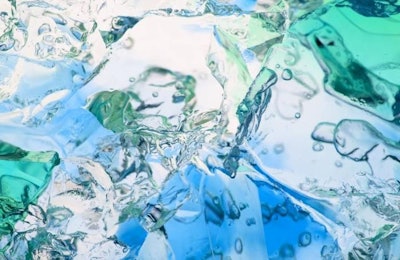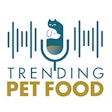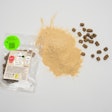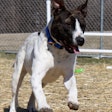
Gelatin now used in dental pet treats may help solve the problem of crumbling high-meat pet food kibble, while providing more protein. Kansas State University (KSU) researchers found that low-Bloom gelatin, a type used to clarify wine and form dental pet chews, reduced extruded-kibble breakage better than other forms of gelatin, such as that found in human dessert packets.
Gelatin as binder for high-meat pet food
The high-meat pet food trend created a problem for extruder operators, which gelatin might fix. Adding more meat meant adding less plant-based ingredients and the starch they contain. Starch helps the kibble form properly and not be brittle. Pet food formulators may be able to make up for that lost starch with gelatin.
“Companies interested in producing ultra-high protein diets might want to explore its use for improving kibble durability and the visual quality of these foods for their customers,” study co-author Greg Aldrich, PhD, of KSU’s department of grain science told Petfood Industry.
Along with making the kibble more visually appealing to pet owners, using gelatin as a high-meat pet food binder may appeal to the pets too.
“It is very well liked by dogs and cats - treats made with gelatin are voraciously accepted by dogs and cats,” Aldrich said.
Gelatin’s nutritional value to pets
While preventing brittle kibble, highly palatable gelatin also boosts high-meat pet food’s nutritional value.
“Gelatin contains a high level of highly digestible animal based proteins,” said Aldrich. “However, it is deficient in tryptophan, a specific essential amino acid. So, it would need to be combined with a complementary protein source to provide amino acid balance to the diet.”
Gelatin in high-meat pet food experiment
Aldrich’s team conducted four experiments to test different forms and concentrations of gelatin in high-meat pet food under various conditions in an extruder. They compared their results to kibble made without gelatin as a control.
The team altered gelatin-to-meat ratios, water content, extruder screw speed and other factors. Low-Bloom seemed to show the most promise.
Scientists classify gelatins by their strength when solidified in a certain amount of water. The classification process was patented by Oscar Bloom, hence the terms low-Bloom and high-Bloom. Low-Bloom gelatin is weaker. It allows an object to penetrate its surface more easily that high-Bloom.
In their experiment, Aldrich’s team found that medium- and high-Bloom gelatin increased kibble expansion compared to low-Bloom gelatin. However, increasing gelatin strength also made for brittle kibble. Reducing breakage was the goal, so the team concluded that low-Bloom gelatin showed the most promise.
Labeling issues related to low-Bloom gelatin
Low-Bloom gelatin may work to bind high-meat pet food, but one aspect of the product could reduce the marketing claims pet food marketers can make. While high-protein is a strong pet food trend, those same consumers may also reject animal by-products.
Gelatin derives from animal bones and other tissues. The Association of Animal Feed Control Officials (AAFCO) doesn’t define gelatin specifically, noted Aldrich, although gelatin byproducts are listed.
“So, one could argue that it is a byproduct, but per AAFCO regulations it is not defined specifically as such,” said Aldrich. His team used edible gelatin made for the human food industry.
Likewise, some high-meat some pet food labels promote their products as “real-meat.” Since gelatin is not muscle, pet food marketers might not be able to promote their products as “real meat.” However, that “real meat” claim also is undefined by the AAFCO, according to David Dzanis, PhD, DVM, CEO of pet food industry consulting agency Regulatory Discretion Inc.
Although there may be some labeling limitations, low-Bloom gelatin may serve as a nutritious solution to crumbling high-meat pet food.



















